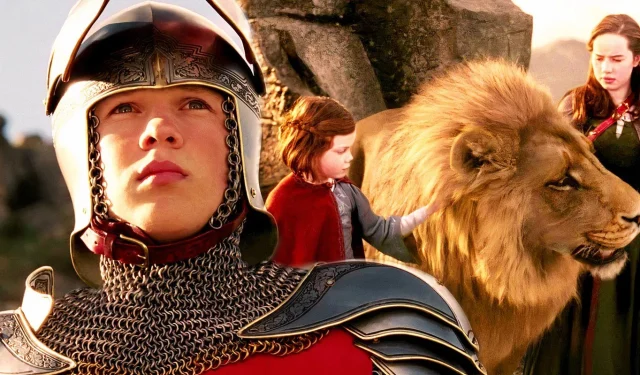
The Challenges of Adapting Narnia
It appears that Greta Gerwig’s upcoming adaptation of The Chronicles of Narnia may successfully navigate the pitfalls that plagued the Disney film series. C.S. Lewis’ cherished fantasy literary works have seen various adaptations, yet none have captured the essence of the entire saga. When fans think of Narnia, the first title that usually comes to mind is The Lion, the Witch and the Wardrobe—the most frequently adapted tale—owing to its status as the foundational story. However, Disney’s experience demonstrated that launching a franchise with this particular book can be problematic, as the Pevensies’ inaugural adventure is tough to follow with sequels.
Flaws in Disney’s Narnia Franchise
Sequels Fell Short of Expectations
Disney first introduced audiences to The Chronicles of Narnia: The Lion, the Witch and the Wardrobe in 2005, achieving a respectable $745 million at the global box office. This positive response led to further sequels, specifically The Chronicles of Narnia: Prince Caspian and The Chronicles of Narnia: The Voyage of the Dawn Treader. Regrettably, these follow-ups garnered significantly lower box office earnings, at $420 million and $416 million respectively. Given the expensive nature of such fantasy projects, Disney ultimately decided against continuing the franchise. However, with Gerwig at the helm, there may be hope for a different outcome.
Gerwig’s Approach to Narnia: A Fresh Start
Adapting The Magician’s Nephew: A Likely Choice
Gerwig has a unique opportunity to approach her Narnia adaptation in two significant ways. She could choose to reboot the original story, The Lion, the Witch and the Wardrobe, or she could blaze a new trail by adapting The Magician’s Nephew, the prequel to the series, which has yet to receive a feature film treatment. Beginning her adaptation with The Magician’s Nephew offers Gerwig a chance to create a fresh narrative foundation, providing the potential for a more cohesive and engaging franchise. Moreover, this prequel can seamlessly introduce audiences to other stories within the franchise.
Speculation suggests that Gerwig may prioritize The Magician’s Nephew as her starting point. This book dives into the origins of Narnia and its pivotal characters, a narrative many viewers might be unaware of, yet it offers essential context for better understanding the more commonly known tales. By beginning with this foundational story, Gerwig could rejuvenate interest in The Lion, the Witch and the Wardrobe and its successors, thus steering clear of the hurdles encountered by Disney.
Advantages of Starting with The Magician’s Nephew
A Logical Beginning for the Franchise
Steering clear of the mistakes made by Disney is a compelling reason for Gerwig to take this alternative path; however, the motivation to adapt The Magician’s Nephew first extends beyond just avoiding pitfalls. This book represents the true starting point within Lewis’ narrative timeframe. Although it was published as the sixth book in the series, the events therein take place long before the Pevensies are introduced to Narnia. It elucidates critical character backstories, like those of Aslan and the White Witch, enriching the understanding of their subsequent actions.
Considering the numerous adaptations already made, Gerwig’s strategy needs to be distinct to foster a sustainable franchise. While The Lion, the Witch and the Wardrobe is indeed a compelling narrative, it lacks the depth that an origin story provides. By starting with The Magician’s Nephew, Gerwig lays a strong and essential foundation, allowing for continued exploration of Narnia’s rich tapestry in future adaptations.




Leave a Reply